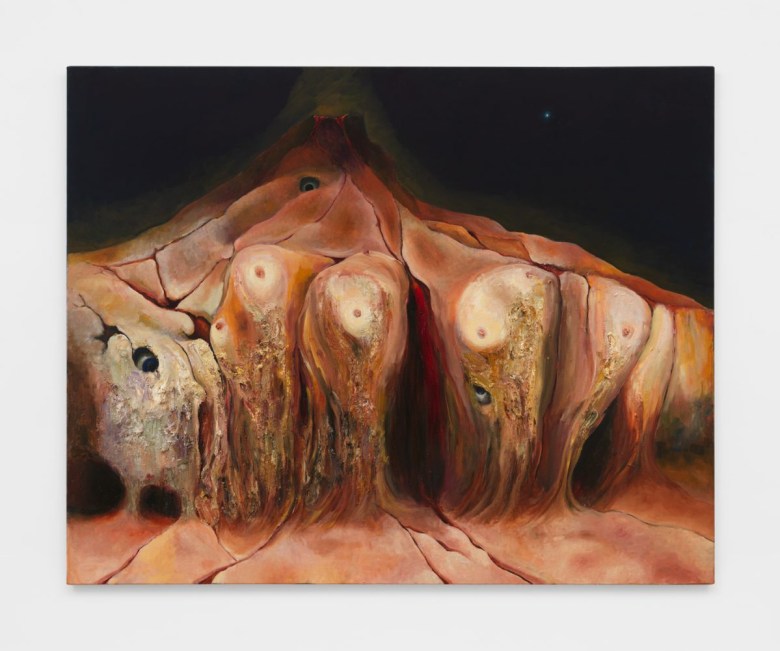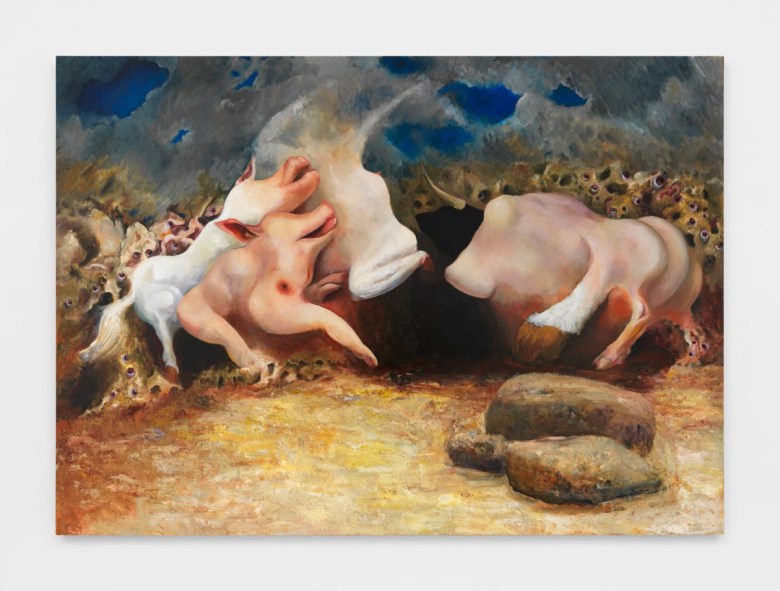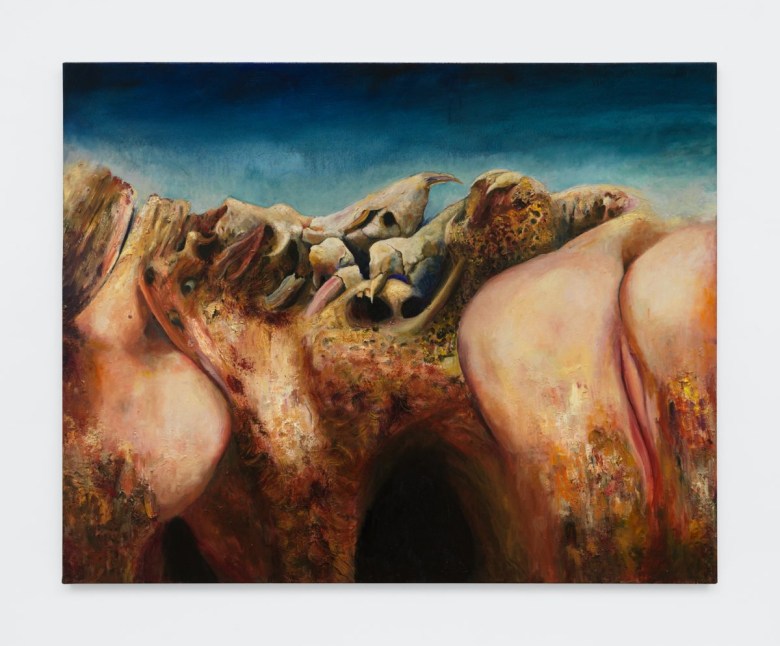Support Independent Arts Journalism
As an independent publication, we rely on readers like you to fund our journalism. If you value our coverage and want to support more of it, consider becoming a member today.
Already a member? Sign in here.
I first met the multitalented Danny Moynihan in the early 1980s, but I did not see him again until recently. During that time, he’s worked as a gallerist and an independent curator, published a satirical novel about the art world (Boogie-Woogie, 2014) and a selection of his collection of erotic photographs (Private Collection: A History of Erotic Photography, 1850–1940, 2014), written An Installation for Agongo, an opera, and exhibited his work in England and Los Angeles (which I was only able to see in reproduction). Because I felt strongly about his paintings when I saw them in the 1980s, early in his career, I was particularly curious to see In Praise of Limestone at Nathalie Karg Gallery, his first solo exhibition in New York. I knew his work had changed, but I wasn’t sure how.
The exhibition’s title comes from one of W. H. Auden’s finest poems. In a letter to his biographer, Edward Mendelson, Auden wrote of limestone “that rock creates the only human landscape.” I mention this because Moynihan’s paintings, which begin with direct observation of different landscapes visited by Paul Cézanne, invite allegorical readings, but with a twist. The hidden meaning of his images, which meld human and nonhuman forms with rocky landscapes, remains opaque. They are invitingly impenetrable, even as they stir up all sorts of associations, from mythological beginnings to rampant lust and greed.
While the exhibition’s 10 paintings primarily depict rocky landscapes, each one has its own character. Since one of the show’s underlying themes is the relationship between a human body and an indifferent landscape, finding different ways to convey that exchange was one of Moynihan’s challenges, along with making each landscape specific and distinct from the others.
In “Quarry” (2021–22), which takes Cézanne’s depictions of Bibémus Quarry as a starting point, dinosaur bones merge with large rough stones, and together evoke the body and flesh. It is this ambiguity that held my attention. Are we looking at stones or buttocks? The rough areas can suggest scar tissue or wounds, adding another layer of meaning to the work.
By reminding us that we live on a planet that has been home to innumerable other animals, many of which are long extinct, Moynihan frames the present within an expansive stretch of time. By imbuing some of the stones with a fleshy presence that ranges from youthful to decaying, he adds another a measure of time. The sky above the land that speaks to these two measures of time adds yet another sense of time, underscoring our insignificant existence in an indifferent universe. I think this understanding of time’s disdain for humankind and the myths we derive from the rocks and soil of the earth — whether they can be updated and transformed without losing their primal power — are on the artist’s mind.

The contour of the mountain in “Gaia” (2021–22) resembles Paul Cézanne’s Mont Saint-Victoire, but Moynihan has transformed it into a volcano. An irregular row of large, different-sized, orb-like shapes protruding from the foot of the mountain is animated by the Cyclopean eyes that seem to stare back at us. They belong to creatures we cannot see. What are we to make of them? And, equally important, what do they make of us? The work draws out a feeling of mutual estrangement due to our inability to see the entire creature.
“Charge” (2021–24) is the only painting populated by active creatures, which resemble pigs. The two on the left side of the work are licking and nuzzling what seems to be an unidentifiable milky white creature, similar to the single one on the right. Behind them is a formation of porous limestone from which staring eyes can be seen. The juxtaposition of eyeless porcine figures and bodiless eyes, soft flesh and porous rocks, suggests the alienation of mind and body, rational thinking and animal greed. Is lust an impulse that we can control? What can we do about the greed of the super rich? How does their greed affect us and the earth we share?
By beginning with motifs inspired by Cézanne, is Moynihan charting how far we have devolved since the single-minded French painter who walked for miles in pursuit of the perfect view of diffident nature? What does it mean to animate the stones with flesh and eyes? There are no easy answers to the questions that arise in these paintings.

Danny Moynihan: In Praise of Limestone continues at Nathalie Karg Gallery (127 Elizabeth Street, Lower East Side, Manhattan) through December 20. The exhibition was organized by the gallery.
Credit: hyperallergic.com











